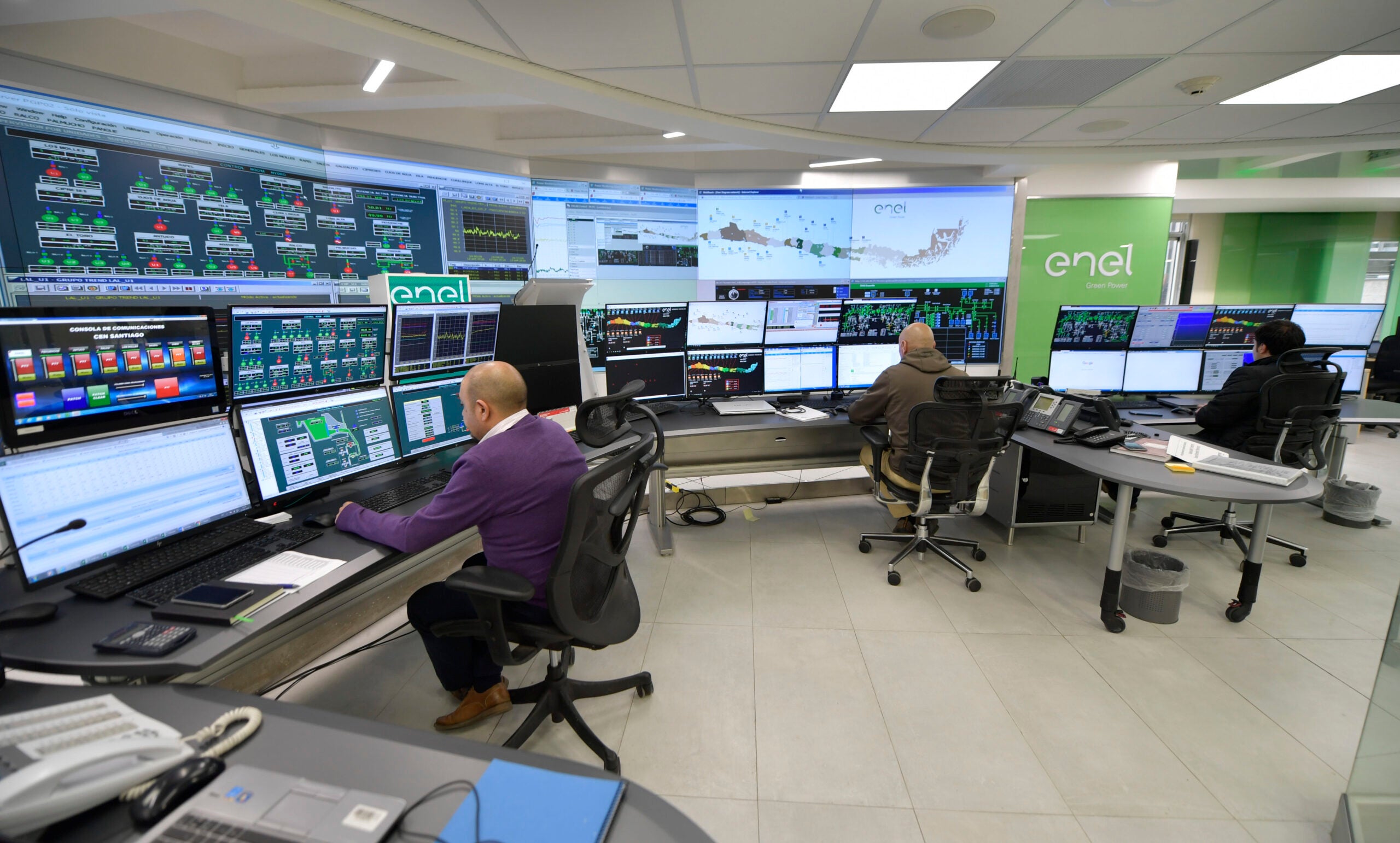
In September, Enel Chile, the Chilean subsidiary of Italian renewables company Enel Green Power, cut the ribbon on a new renewable energy control room at its headquarters in Santiago.
The site will allow the supervision of an impressive 4.7GW of hydropower, solar, wind and geothermal energy assets, spanning 36 plants dotted across the country. At the time of writing, it is the largest and most ambitious renewable energy control room of its kind on the South American continent.
The hope for Enel is that it will enable the group to better monitor the mix of technologies already present in the country, while at the same time optimising energy flows – in real-time – between grid demand and renewables-derived supply.
Built in just four months, the control room is now up and running, and should be able to support Chile’s renewable energy production on a 24/7 basis. Here, Antonio Scala, who heads up Enel Green Power’s South American operations, provides an overview of life on site, the technology mix at play, and plans for rolling out other centres in the near future.
Ross Davies: What prompted Enel to launch its new central control room for renewable energy plants in Chile in the first place?
Antonio Scala: We launched the project following the completion of a corporate reorganisation that brought together all of Enel Group’s wind, solar, geothermal and hydro assets under a single management structure.
We have had a diversified fleet in Chile for a long time, with a very high level of automation, but historically, the company’s wind, solar and certain small hydro assets were managed separately from large hydro assets. The single management structure for all renewable assets now allows us to fully leverage on a wide range of operational synergies.

US Tariffs are shifting - will you react or anticipate?
Don’t let policy changes catch you off guard. Stay proactive with real-time data and expert analysis.
By GlobalDataThis renewable control room – which is the largest of its kind in South America, and one of the most technologically advanced in the world – enables more optimised oversight of these assets.
RD: How many members of staff does the control room employ? What are their main roles? Have they undergone any kind of training?
AS: From this new control room we remotely operate 36 renewable power plants – 18 hydro, nine wind, eight solar, and one geothermal – as well as transmission lines and associated substations, all spread across 2,500km between the Antofagasta and Los Lagos regions in Chile.
It has a team of 18 engineers on site, comprised of 17 operators and dispatchers, as well as the head of the control room, who is dedicated to efficiently managing the assets.
The team operates the plants remotely and interacts with the National Electrical Coordinator [CEN] to receive and deliver information related to the operation of the facilities. The control centre continuously sends the variables of energy generated, reservoir levels and generation forecasts [wind and solar] to the CEN, while SCADA [supervisory control and data acquisition] systems continuously report the operational status and production level of all renewable facilities. It is an around-the-clock job, so we have rotating shifts to guarantee the operational continuity of the facilities.
The team undergoes specialised training related to the different types of technology through the use of operation simulators.
RD: What kind of technologies does the room utilise in terms of automation, communications systems and data visualisation systems?
AS: The control room employs advanced technology in its communication systems, data processing and automation systems, as well as in the remote control of renewable energy plants. The project was built according to the Uptime Institute’s TIER III standard, which guarantees an availability of the data centre exceeding 99.9%, allowing us to control our renewable plants without interruptions.
The Renewable Control Room has industrial SCADA systems that guarantee reliable operation and have different architectures depending on the generation technology they manage. They can manage more than 250,000 operational variables – such as voltage, tension and temperature – in real-time.
Other technologies in the control room include a panoramic video wall system; motorised workstations with state-of-the-art industrial ergonomics standards; a redundant precision climate system that controls temperature and humidity, which is necessary for electronic equipment; voice communication systems, such as satellites and radio frequencies VHF, UHF and HF; and a video surveillance system.
RD: What are some of the potential problems and challenges that may be encountered in control room operations? What fail-safes do you have in place to mitigate against them?
AS: As a remote control room, the main issues we face are associated with the communication systems that support voice and data, which are external, and therefore do not depend on us.
However, in the event of an interruption in communication channels, a monitoring system sends a failure alert so that it may be addressed as soon as possible. In fact, we rely on redundant communication systems using diverse channels to properly address communication issues and allow the management and supervision of the facilities under the responsibility of the control room at all times.
RD: Does Enel have any plans to build other such central control rooms in the future?
AS: Yes. We are already exporting the model we have implemented in Chile to other countries, which has set a benchmark for the standards of control rooms and remote management in renewables.
The most advanced project towards this aim is in Colombia where we are completing an 86MW solar PV plant, which, once connected to the grid, will be integrated into the already-operating control room of hydro plants.
We have also launched a single control room in Brazil for our wind, solar and hydro assets there, which is similar to the one in Chile.



